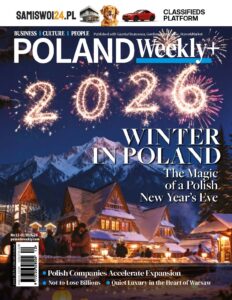Polish labor market reversing mono-cultural trends
Poland, often perceived throughout the second half of the 20th century as a country without national minorities, is becoming a multicultural society, a phenomenon especially visible in larger cities. In 2020 alone, 3.16 million immigrants legally entered Poland with a work and residence permit, according to Eurostat data. We have thus been observing a quiet but huge change in Poland’s demographic structure, the biggest since the last war.
Poland now hosts about 2 million Ukrainians “permanently”, over 680,000 Belarusians and 140,000 Russians. There are also more Moldovans (over 70,000), and Georgians and Indians (over 50,000) each. In Warsaw, we additionally observe an “older” Vietnamese immigration, which has created its own estates in the city.
The vast majority of immigrants have settled in Poland in large cities or in its western part. For example, in Wrocław 25% of residents are Ukrainians, which can be seen and heard in the streets. They already have their own media, and in cinemas you can see screenings with subtitles in Ukrainian (similarly in the Tri-City).
The National Bank of Poland estimates that the work of immigrants in Poland in recent years has increased GDP growth rate by 0.5 pp. The impact of the migration on the Polish economy is positive and the need to fulfil the employment gap still remains high. Enterprises feel the shortage of workers especially in sectors such as ICT, commerce and construction. Without a wider opening of the labor market to foreigners, it will be difficult to maintain rapid economic growth.
As a result of demographic processes (natural and migrational), labor resources are shrinking. In 2000, the number of people of working age was 25,299,457, while in 2020 it was 23,846,745 people, which is almost 1.5 million less. Companies need employees, both in specialist and managerial positions, as well as for simple jobs.
“The labor shortage is felt especially in the ICT, trade, production and construction industries. Without filling this gap, enterprises will lose the possibility of executing term contracts or meeting concluded contracts. There is an urgent need to open up more to employees from third countries,” says Monika Fedorczuk, an expert from the Lewiatan Confederation.
Increased emigration also has another positive impact on the economy. By opening the border, the government acquired several million new tax and social insurance payers, not only working in Poland, but also spending money in Poland. Worth emphasizing is the fact that already 833,000 immigrants cover full social insurance (ZUS) in Poland (data at the end of August this year).
Immigrants are not only shop assistants, cleaners, construction site workers and waiters. Increasingly often they are also high-class specialists. For example IT specialists from India or Belarus or Ukrainian and Belarusian doctors.
It is also very easy to find foreign entrepreneurs. Ukrainians are opening restaurants in large cities. They are not only intended for Poles, but also target their compatriots who may miss their native cuisine. Foreigners often run real estate, sale and rental agencies, but also companies repairing household appliances and electronics.
Economic immigration in Poland is supported by 9 out of 10 Poles (86%), and half would like immigrants to have no restrictions in taking up a job. Only 1 in 10 Poles are against it and this has been the case in Poland for over ten years.
Interestingly, at the beginning of the 1990s, most Poles did not want foreigners working in Poland. Traveling around the world, around the European Union, Polish society has become more open. Still, it places strong conditions on foreigners: ok for immigration, but to work, not for social benefits.
NBP analysis shows that the percentage of immigrants who want to stay in Poland permanently has risen sharply in the last five years. More than half of the immigrants stay in Poland with at least one family member. This will have two consequences. Firstly, they will stop sending earned money outside Poland. Secondly, they will become a permanent part of the increasingly colorful landscape of Poland.
Photo by Etty Fidele on Unsplash







